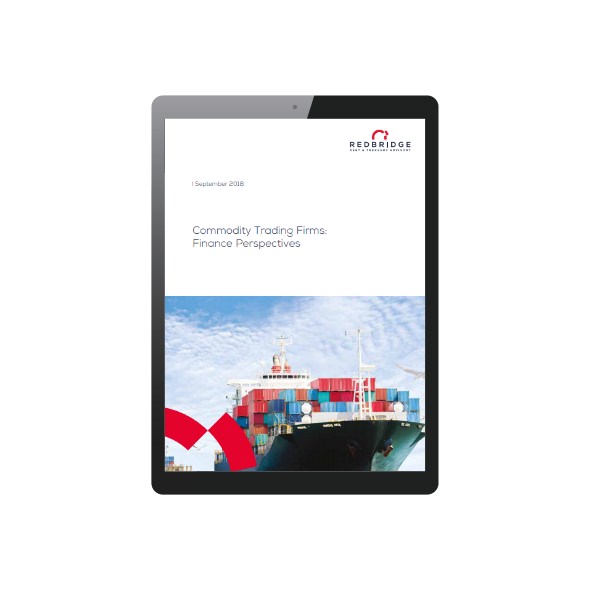Mihai Andreoiu, Senior Director at Redbridge, is a big fan of borrowing base structures as a superior form of financing for commodity players. Here are the reasons why he certainly hopes to see more such deals coming to market.
Having worked on numerous borrowing base (BB) transactions across metals and energy over a decade both as banker and advisor, the main observation is that each such facility really is unique, one of a kind.
The borrowing base has long been one of the most mystified financing instruments for trading companies. Referred to “an invitation to fraud” or a “blank check” by risk managers, they continue to be used by a select number of large commodity firms. Many bankers will remember their long discussions with credit teams about the potential emergence of a new borrowing base. Similarly, structured trade or corporate finance heads will remember the many challenges that made the structuring process of such facilities difficult. But ultimately, despite the structuring bank, agent or client being in the spotlight, most problematic borrowing bases were still wound down without significant write-offs, proving the worth of the concept. In a paper from July 2018, Moody’s refers to loans with borrowing bases remaining among the best-performing instruments during a default.
Ultimately, a borrowing base is simply a form of good old-fashioned secured Iending. For commodity traders the borrowing base will represent various short-term assets such as inventories, receivables and advances to suppliers while for oil and gas producers borrowing bases will typically include various oil reserve types. In a way, everybody has a borrowing base, ranging from one’s house or car, small- and medium-sized enterprises’ financing stocks and receivables, all the way up to large commodity trading firms or oil producers.
As transactional finance has been the norm for commodity trade finance, the choice of an instrument such as a borrowing base does not seem obvious for every participant that has sufficient assets to structure this kind of financing. The general feeling is that these kinds of instruments are not for everybody. And rightfully so, as the main difference is that the bank would not have full insight into each underlying asset finance and it would have to rely on the reports received from the trading company. So operational aspects, legal matters and even trust play significant roles in the risk assessment of such BB facilities.
However, the threshold seems to be artificially high. There are many commodity trading companies with financing lines totaling hundreds of millions or more, and yet they seem comfortable with the labor-intensity and opportunity cost of a transactional approach. Let’s look at some points that commodity trading firms might wish to consider:
- Borrowing bases are, operationally, an efficient financing instrument: more structuring work is required upfront, but after that there is substantially less operational burden than for bilateral facilities.
- The structuring process of a borrowing base is an opportunity and tool to bring, through a rigorous process, financing banks “on the same page” in terms of pricing and structure rather than have an overall fragmented bilateral facility landscape.
- Borrowing bases involve less operational and financing risk as parameters and eligibility criteria are already pre-agreed, eliminating the need for the lengthy deal presentations and discussions that bilaterals involve.
- They offer potential for committed liquidity (even long-term), while bilaterals are either uncommitted in nature or committed but unsecured (which implies less bank long-term credit appetite for them).
- They offer the possibility to attract new banks that have the appetite for secured trade finance business but not the operational capacity for bilaterals or sufficient ticket size. Beyond the usual pool of BMLAs we see many banks interested in borrowing bases in general syndication.
- They offer the possibility to optimally tranche the facility including the best features of other instruments and catering for all scenarios: a committed tranche providing the base-case liquidity and eliminating trades’ financing / refinancing risk; an uncommitted tranche providing the required upside safety margin for a growing business without consuming banks’ economic capital and thus free of commitment fee; an unsecured / clean tranche providing the necessary quick access liquidity insurance (i.e. your current unsecured RCF could actually be a tranche in a larger facility).
Commodity trading firms face a large number of risks that could jeopardize a patiently fostered business
Given the multitude of industry specific challenges at present for commodity trading firms, Redbridge’s consulting team believes in sharing its thoughts on a wide range of topics of interest through a publication designed especially for this select audience.
In this publication
- Trading firms and banks: who’s afraid of whom?
- What’s driving the risk appetite of your (potential) financing banks?
- Why borrowing bases are valuable opportunities to consider
- The alternative represented by trade finance funds
- How to achieve a consolidated vision of all the trades processed at each moment in time
And also, a conversation with
- Trafigura
- Louis Dreyfus Commodities
- Alvean

